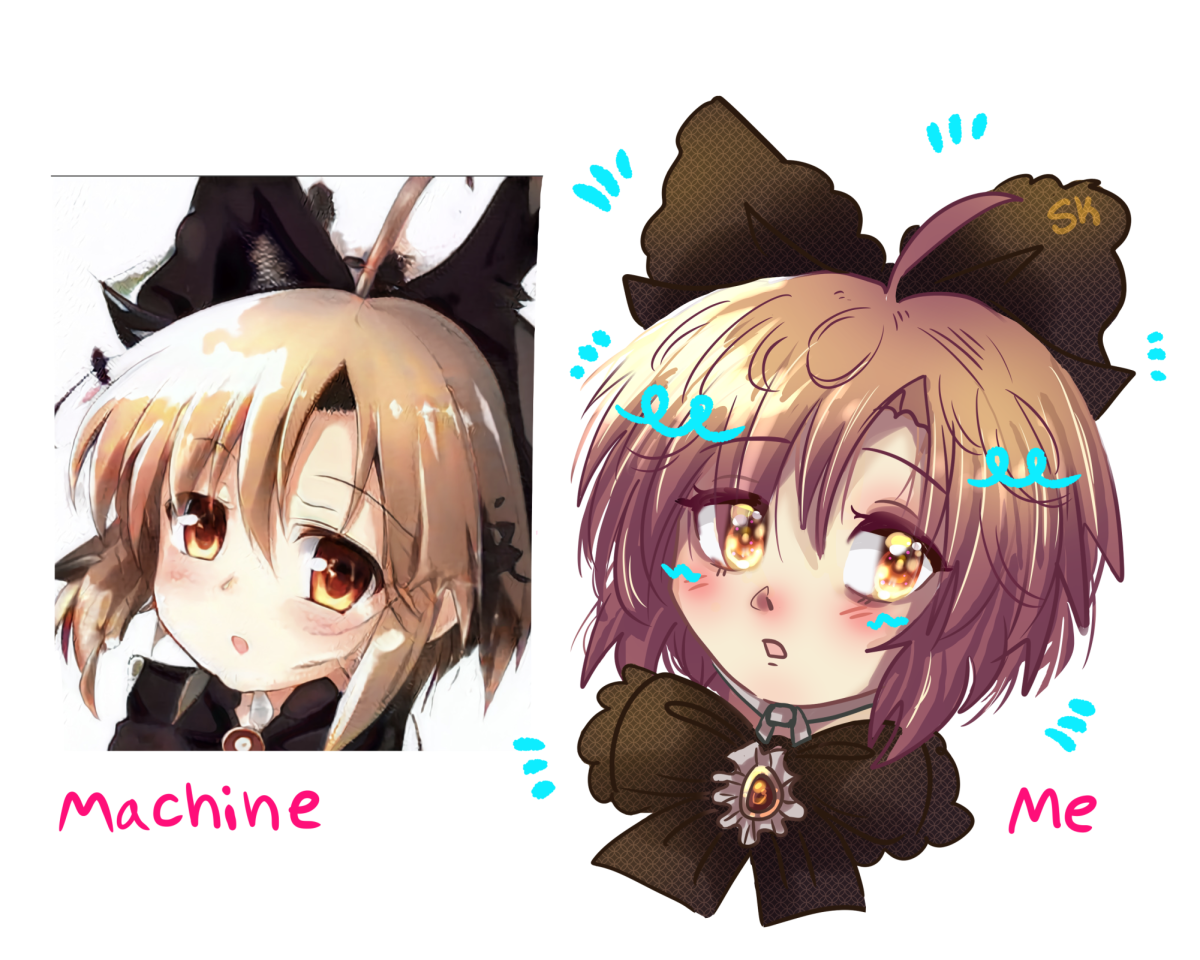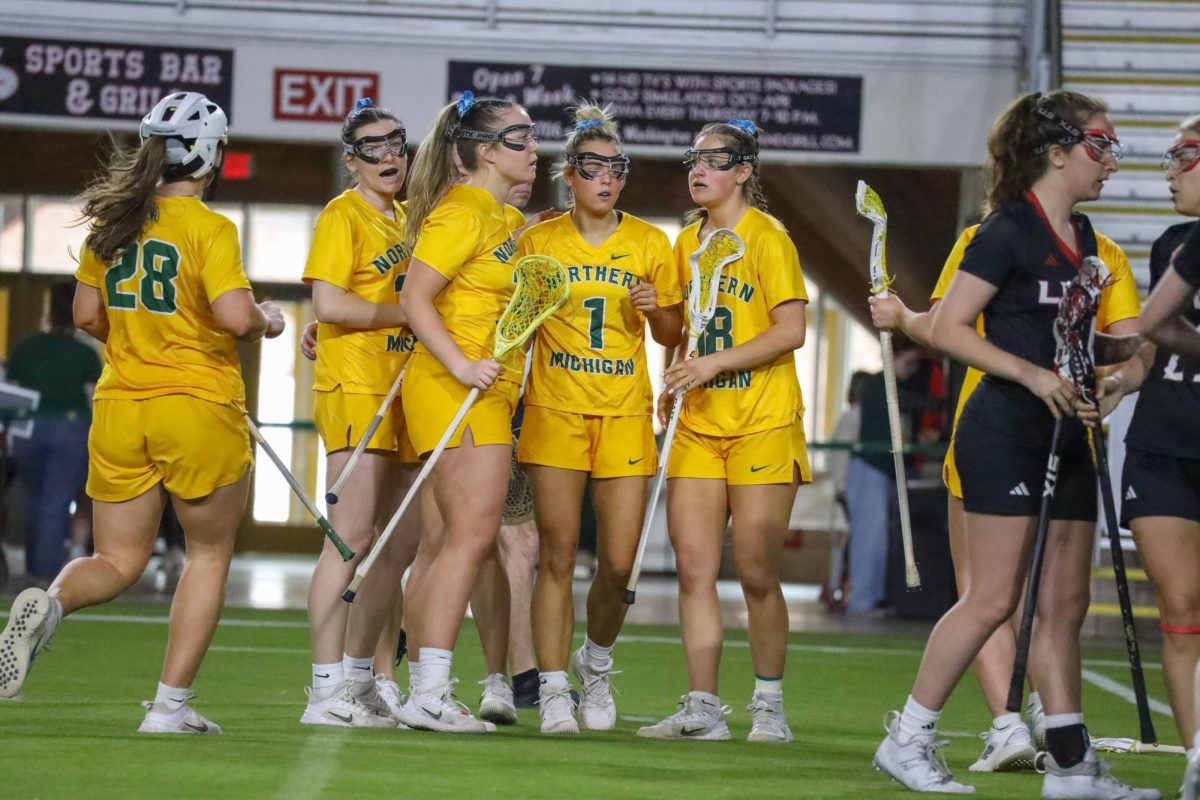Over 100 NMU community members gathered in the Whitman Commons Monday, Oct. 9 during the morning ceremony of NMU’s celebration of Indigenous Peoples’ Day.
The ceremony began with a prayer said in Anishinaabemowin, the language of the Anishinaabe, and a drum song by Morning Thunder, a drum circle group made up of Center for Native American Studies (CNAS) faculty and community members. This was followed by speeches, including those given by two members of the Native American Student Association (NASA), Kateri Phillips and Shelby Boggs.
“It’s so important to celebrate ourselves, our identities and our cultures. I think we spend a lot of time mourning our identities, our peoples and the culture that has been assimilated and taken from us,” said Shelby Boggs, member of the Sault Sainte Marie tribe, Eagle clan and NASA social media manager.
Indigenous Peoples’ Day is celebrated annually on the second Monday of October “to celebrate and honor Indigenous peoples while also commemorating their histories and cultures,” according to the Student Equity and Engagement Center (SEEC). The holiday serves as a proper telling of history, said Kateri Phillips, member of the citizen band Potawatomi Nation and NASA president.
“Understanding indigenous histories [is important] not only for those looking into our communities, but for our communities to recognize who we are, what we come from and to take pride in that,” Phillips said.
Speeches were also given at the ceremony by Associated Students of Northern Michigan University (ASNMU) President Gwen Feamster and NMU President Brock Tessman.
“Today we as a student body are able to acknowledge the past, celebrate the present of Indigenous Peoples’ Day and hopefully work towards a better future for our indigenous communities and friends,” Feamster said in her speech.
In 2015, NASA petitioned to formally request that the university rescind recognition of Columbus Day and begin celebrating Indigenous Peoples’ Day in its place. After approval by ASNMU, the Academic Senate, the President’s Council and the Board of Trustees, the holiday was officially implemented on NMU’s calendar beginning in 2021.
A land acknowledgement sign was also added to the NMU campus in 2021 in the Academic Mall outside the McClintock and Thomas Fine Arts Buildings. NMU is located on the ancestral homelands of the Anishinaabe Three Fires Confederacy, comprised of the Ojibwe, Odawa and Potawatomi tribes.
“It is a gift to still be here with our land, our people and our culture, because they are the essence of who we are,” Boggs said. “That’s why land acknowledgments are so important. We’re not just simply asking you to acknowledge who lived on these lands, we’re quite literally asking you to acknowledge the land, to connect yourself to this land, as our ancestors have done since time immemorial.”
Phillips encourages everyone to learn more from tribal nations of the area.
“Many tribal nations have their own specific histories and stories in regards to Gichi-namebini-ziibing or Marquette. All of them are stories that need to be told,” Phillips said. “As we stand here together today, acknowledging the contributions of complex histories of these nations and their people, hopefully we will all take the time throughout our everyday lives to actively make space for positive change.”
Tessman echoed this sentiment from NASA leaders in his speech during the ceremony.
“The path forward is not a clear path, and that’s okay,” Tessman said. “It’s a path that we’ve got to chart for ourselves and there are a few things that I think are particularly promising about what we can do together.”
Tessman laid out four ways to highlight and uplift indigenous members of the NMU community. First, by comprehensively integrating indigenous wisdom into the curriculum of all programs at the university. Second, by acknowledging and embracing the wisdom of indigenous peoples in sustainability efforts at the university, in both Wildcat WellBeing and the carbon neutrality proposal. Third, by engaging with local tribes of the Upper Peninsula and the Midwest. Fourth and finally, by reducing financial barriers for prospective indigenous students to encourage their attendance at the university.
Since 1992, CNAS has offered an interdisciplinary minor in Native American Studies that includes Native American Studies, art and design, English, history and anthropology courses. NMU is the first and only university in the state of Michigan to offer a major in Native American Studies.
In 2015, a proposal submitted by CNAS was approved by the Academic Senate to implement a Native American Studies major, which was offered beginning in 2016. In 2018, CNAS implemented a Native American Community Services minor.
To read more on the history of the NMU Center for Native American Studies click here.
“It’s so important that we have the Center for Native American Studies and the Native American Student Association, because they both are places that empower indigenous people to gather together and to celebrate ourselves and who we are as a people,” Boggs said.
These efforts are hoped to make indigenous students feel recognized and supported, Phillips said.
“There [are] not that many of us creating these events and these spaces and it’s so important,” Phillips said. “The more support we get, there’s more fuel to the fire, it gets to keep going and moving forward and never die out.”
The morning ceremony ended with another song from Morning Thunder and was followed by a healing march from Whitman Hall to the land acknowledgement sign on campus, which ended at the fire site near Whitman Hall.
“It’s such an honor to celebrate who we are and how far we have come because it is a gift to be indigenous,” Boggs said.


























